
Volume XX, Issue VIII: Springtime, Good Shepherd Episcopal Church.
Photographic Ramblings, Springtime
New life, the coming of the great feasts of Passover and Easter celebrate deliverance and new life. It is fitting that in our hemisphere the season is marked by the return of Spring!
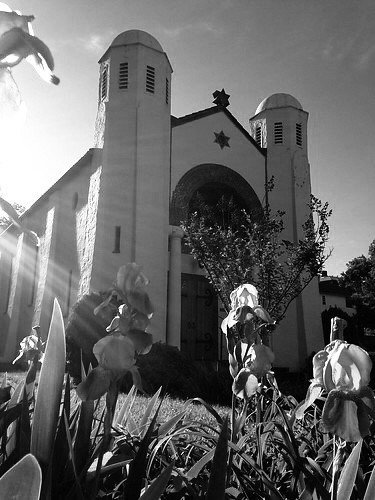
Temple Beth Israel, Staunton, Virginia.
A Legend is Gone
[click to read]
The Passing of Rush Hudson Limbaugh
Let us all speak, and fearlessly. Let that be Rush’s monument. In a way, he built it himself.”
– Andrew Klavan
(read More)
Frederick Douglass and IMAGO DEI
[click to read]
Frederick Douglass was a former slave, abolitionist, supporter of women’s suffrage, orator, writer, adviser to Presidents, and diplomat. All of this is well known, but one of the most misunderstood elements of his life story was his deep and abiding Christian faith. (read more)
A Conversation with Dr. Shelby Steele
Part I [click to read]
Dr. Shelby Steele addresses racial division in America, examining the civil rights movement of the 1960s and comparing it to the campaign for social justice today. He reminds us of the importance of strong marriages and families as the solution to many societal ills. (read more)
A Conversation with Dr. Shelby Steele
Part II [click to read]
Dr. Shelby Steele addresses racial division in America, examining the civil rights movement of the 1960s and comparing it to the campaign for social justice today. He reminds us of the importance of strong marriages and families as the solution to many societal ills. (read more)
We’ll Have Herd Immunity by April
[click to read]
Opinion by Dr. Marty Makary in WSJ
Amid the dire Covid warnings, one crucial fact has been largely ignored: Cases are down 77% over the past six weeks. If a medication slashed cases by 77%, we’d call it a miracle pill. Why is the number of cases plummeting much faster than experts predicted? In large part because natural immunity from prior infection is far more common than can be measured by testing. Testing has been capturing only from 10% to 25% of infections, depending on when during the pandemic someone got the virus. Applying a time-weighted case capture average of 1 in 6.5 to the cumulative 28 million confirmed cases would mean about 55% of Americans have natural immunity. (read more)
Some medical experts privately agreed with my prediction that there may be very little Covid-19 by April but suggested that I not to talk publicly about herd immunity because people might become complacent and fail to take precautions or might decline the vaccine. But scientists shouldn’t try to manipulate the public by hiding the truth. As we encourage everyone to get a vaccine, we also need to reopen schools and society to limit the damage of closures and prolonged isolation. Contingency planning for an open economy by April can deliver hope to those in despair and to those who have made large personal sacrifices.” – Dr. Makary
Dr. Makary is a professor at the Johns Hopkins School of Medicine and Bloomberg School of Public Health, chief medical adviser to Sesame Care, and author of “The Price We Pay.”
31 Reasons Why I Won’t Take the Vaccine
[click to read]
by Chananya Weissman in Gates of Vienna
It’s not a vaccine. A vaccine by definition provides immunity to a disease. This does not provide immunity to anything. In a best-case scenario, it merely reduces the chance of getting a severe case of a virus if one catches it. Hence, it is a medical treatment, not a vaccine. I do not want to take a medical treatment for an illness I do not have. (read more)
Ma Bell Suppressed Innovation for Thirty Years
[click to read]
Oh, for the days of Ma Bell!” is not a lament we’re likely to hear. And for good reason. Before the breakup of AT&T, America’s telephone system was a government-sanctioned monopoly characterized by stagnant service offerings, high costs, and a glacial pace of consumer-facing innovation. (read more)
Baby Bells and “Baby Books”
[click to read]
It’s time to break up Facebook. If you support real free markets, please listen for a minute. We all love the innovation that comes from free competition. We all love the very real choices that we have in a market economy. In my youth, we never liked the phone company all that much. The phone company in its first three decades was a monopoly. There was little choice and less than radical innovation. Ruth Buzzy did a very funny routine where she pretended to be a switchboard operator dealing with a very frustrated “Mr. Millhouse.” At one point, she offers the retort “The Phone Company is Omnipotent!” We laughed, but it was true. One overruling corporation operated the national network. Only Western Electric could supply the equipment. Then in the 1980s that all changed. (read more)
“Refusal to Hear Election Cases is Inexplicable”
[click to read]
The Supreme Court ruled 6-3 to reject the review of two 2020 Pennsylvania presidential election cases Monday, but Justices Samuel Alito, Neil Gorsuch and Clarence Thomas believe they should have been given hearings. (read more)
The 1964/65 World's Fair

The Unisphere, symbol of the fair in Flushing Meadow Park, Queens, New York. Photo by Guy Percival
Peter Müller-Munk
The Silversmith Who Designed the Unisphere

Peter Müller-Munk, Industrial Designer.
Today the Unisphere, a twelve story representation of the world balanced above a reflecting pool in Flushing Meadow Park remains as a reminder of the 1964 New York World’s Fair. Most people know that it was fabricated by U.S. Steel in Pittsburgh, Pennsylvania but few people know that the design was created by a German silversmith.
Peter Müller-Munk was born Klaus-Peter Wilhelm Müller on June 25, 1904, in a wealthy suburb of Berlin, in present-day Germany. He began his career as a silversmith, crafting unique and custom silver objects before turning to industrial design. He emigrated to the United States in 1926 and worked as a metalworker at Tiffany and Co. in New York City. He moved to Pittsburgh in 1935 to accept a job at the Carnegie Institute of Technology as assistant professor in the first American university baccalaureate degree program in industrial design. In 1938 he opened his first consulting office in Pittsburgh with Robert Paul Karlen as his first employee. Clients had so expanded by 1945 that he found it necessary to resign from Carnegie Tech to devote himself to his business. At the time, he began operating under the name Peter Müller-Munk Associates with Karlen and Raymond Smith as associates. Anton Parisson became the fifth partner in 1957. In 1956 Ernst Budke became an associate of the firm. By 1960 there were five partners and six associates. PMMA's client list spanned the globe; local ones included the Pittsburgh Plate Glass Company, Westinghouse, and U.S. Steel. Perhaps the firm’s most recognized design is that of the Unisphere, commissioned by U.S. Steel as the iconic symbol of the 1964 New York World’s Fair. After Müller-Munk died in 1967, his work was largely forgotten until the Carnegie Museum of Art mounted a show of his work.

Fifty-seven years ago this aerial photograph was taken of the New York World's Fair in Flushing Meadow Park. The photograph was likely taken by an airplane mounted camera as was typically used to take overhead photos of large areas in the days before satellite photography.
Charles and Ray Eames
The Way of the Amateur
Merriam Webster says “The earliest sense of amateur ("one that has a marked fondness, liking, or taste") is strongly connected to its roots: the word came into English from the French amateur, which in turn comes from the Latin word for “lover” (amator).” Thus the earliest meaning of the word is simply doing something “for the love of it.” Charles and Ray Eames exemplify that way of living.

Charles and Ray Eames designing the IBM Pavilion for the 1964 New York World's Fair.
The IBM Pavilion at the 1964-65 New York World's Fair covered 54,038 square feet (1.2 acres) in Flushing Meadow, N.Y. Designed by Charles and Ray Eames and Eero Saarinen Associates, the pavilion created the effect of a covered garden, with all exhibits in the open beneath a grove of 45, 32-feet high, man-made steel trees. The pavilion was divided into six sections: The "Information Machine," a 90-foot-high main theater with multiple screen projection; pentagon theaters, where puppet-like devices explained the workings of data processing systems; computer applications area; probability machine; scholar's walk; and a 4,500-square-foot administration building. IBM Archives.

Special Feature: New Prints of Natural Bridge
Natural Bridge, Creation in Stone
Every Spring I look forward to presenting new prints of Rockbridge County’s most famous landmark. This year I will have to do it by means of this publication. If you would like to purchase one of these prints at 8” x 10,” please contact me and I will make arrangements to get one to you.
Bob Kirchman
Mohomony Morning Series


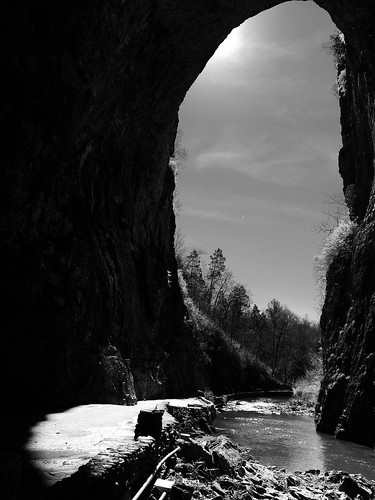
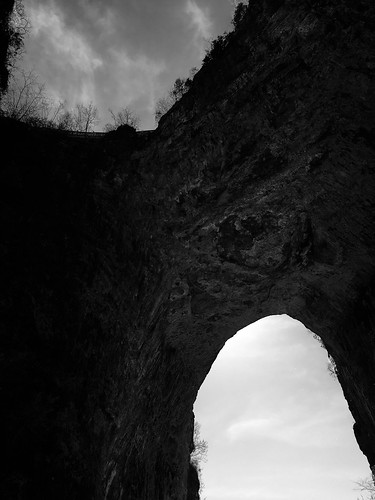



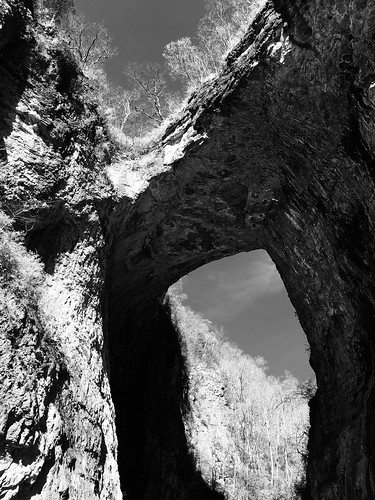
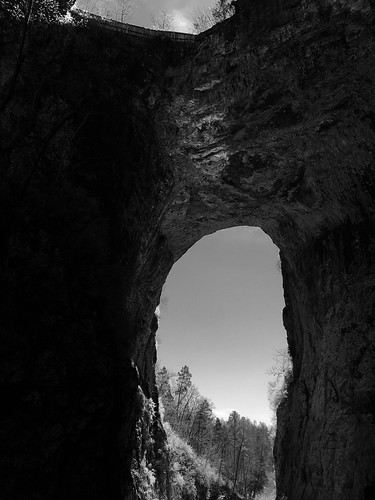



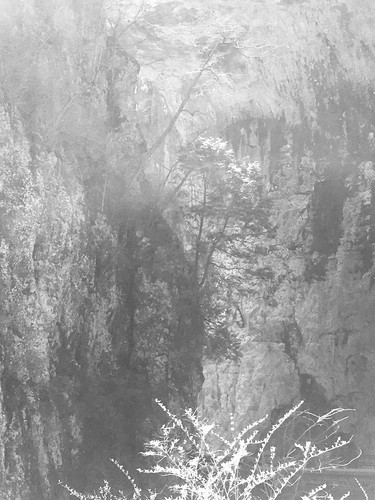


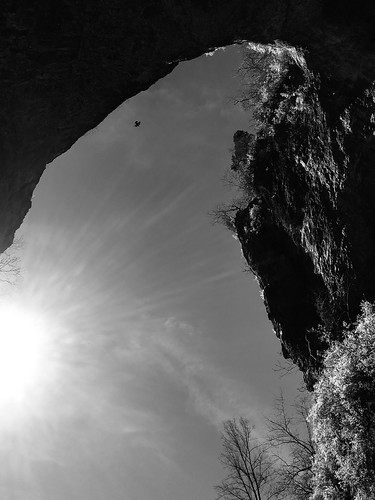
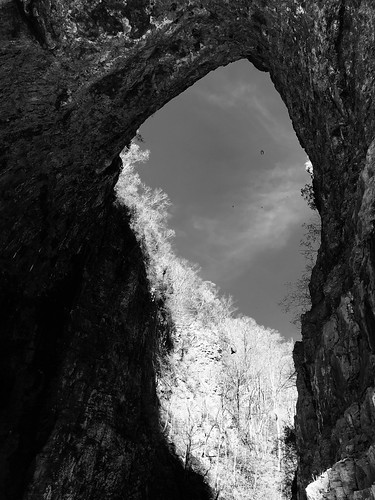
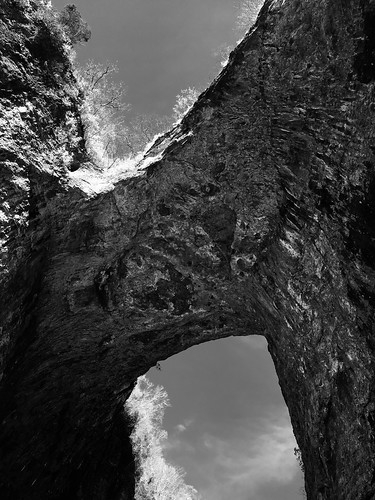
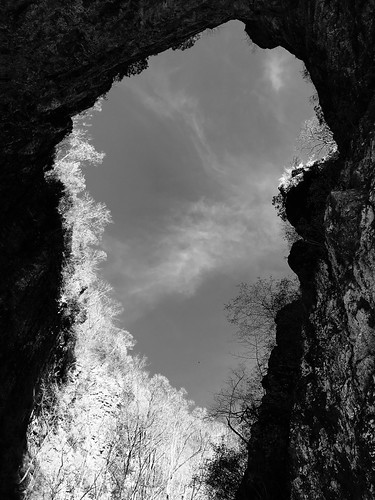

(read More)
Frederick Douglass and IMAGO DEI
[click to read]
Frederick Douglass was a former slave, abolitionist, supporter of women’s suffrage, orator, writer, adviser to Presidents, and diplomat. All of this is well known, but one of the most misunderstood elements of his life story was his deep and abiding Christian faith. (read more)
A Conversation with Dr. Shelby Steele
Part I [click to read]
Dr. Shelby Steele addresses racial division in America, examining the civil rights movement of the 1960s and comparing it to the campaign for social justice today. He reminds us of the importance of strong marriages and families as the solution to many societal ills. (read more)
A Conversation with Dr. Shelby Steele
Part II [click to read]
Dr. Shelby Steele addresses racial division in America, examining the civil rights movement of the 1960s and comparing it to the campaign for social justice today. He reminds us of the importance of strong marriages and families as the solution to many societal ills. (read more)
We’ll Have Herd Immunity by April
[click to read]
Opinion by Dr. Marty Makary in WSJ
Amid the dire Covid warnings, one crucial fact has been largely ignored: Cases are down 77% over the past six weeks. If a medication slashed cases by 77%, we’d call it a miracle pill. Why is the number of cases plummeting much faster than experts predicted? In large part because natural immunity from prior infection is far more common than can be measured by testing. Testing has been capturing only from 10% to 25% of infections, depending on when during the pandemic someone got the virus. Applying a time-weighted case capture average of 1 in 6.5 to the cumulative 28 million confirmed cases would mean about 55% of Americans have natural immunity. (read more)
Some medical experts privately agreed with my prediction that there may be very little Covid-19 by April but suggested that I not to talk publicly about herd immunity because people might become complacent and fail to take precautions or might decline the vaccine. But scientists shouldn’t try to manipulate the public by hiding the truth. As we encourage everyone to get a vaccine, we also need to reopen schools and society to limit the damage of closures and prolonged isolation. Contingency planning for an open economy by April can deliver hope to those in despair and to those who have made large personal sacrifices.” – Dr. Makary
Dr. Makary is a professor at the Johns Hopkins School of Medicine and Bloomberg School of Public Health, chief medical adviser to Sesame Care, and author of “The Price We Pay.”
31 Reasons Why I Won’t Take the Vaccine
[click to read]
by Chananya Weissman in Gates of Vienna
It’s not a vaccine. A vaccine by definition provides immunity to a disease. This does not provide immunity to anything. In a best-case scenario, it merely reduces the chance of getting a severe case of a virus if one catches it. Hence, it is a medical treatment, not a vaccine. I do not want to take a medical treatment for an illness I do not have. (read more)
Ma Bell Suppressed Innovation for Thirty Years
[click to read]
Oh, for the days of Ma Bell!” is not a lament we’re likely to hear. And for good reason. Before the breakup of AT&T, America’s telephone system was a government-sanctioned monopoly characterized by stagnant service offerings, high costs, and a glacial pace of consumer-facing innovation. (read more)
Baby Bells and “Baby Books”
[click to read]
It’s time to break up Facebook. If you support real free markets, please listen for a minute. We all love the innovation that comes from free competition. We all love the very real choices that we have in a market economy. In my youth, we never liked the phone company all that much. The phone company in its first three decades was a monopoly. There was little choice and less than radical innovation. Ruth Buzzy did a very funny routine where she pretended to be a switchboard operator dealing with a very frustrated “Mr. Millhouse.” At one point, she offers the retort “The Phone Company is Omnipotent!” We laughed, but it was true. One overruling corporation operated the national network. Only Western Electric could supply the equipment. Then in the 1980s that all changed. (read more)
“Refusal to Hear Election Cases is Inexplicable”
[click to read]
The Supreme Court ruled 6-3 to reject the review of two 2020 Pennsylvania presidential election cases Monday, but Justices Samuel Alito, Neil Gorsuch and Clarence Thomas believe they should have been given hearings. (read more)
The 1964/65 World's Fair

The Unisphere, symbol of the fair in Flushing Meadow Park, Queens, New York. Photo by Guy Percival
Peter Müller-Munk
The Silversmith Who Designed the Unisphere

Peter Müller-Munk, Industrial Designer.
Today the Unisphere, a twelve story representation of the world balanced above a reflecting pool in Flushing Meadow Park remains as a reminder of the 1964 New York World’s Fair. Most people know that it was fabricated by U.S. Steel in Pittsburgh, Pennsylvania but few people know that the design was created by a German silversmith.
Peter Müller-Munk was born Klaus-Peter Wilhelm Müller on June 25, 1904, in a wealthy suburb of Berlin, in present-day Germany. He began his career as a silversmith, crafting unique and custom silver objects before turning to industrial design. He emigrated to the United States in 1926 and worked as a metalworker at Tiffany and Co. in New York City. He moved to Pittsburgh in 1935 to accept a job at the Carnegie Institute of Technology as assistant professor in the first American university baccalaureate degree program in industrial design. In 1938 he opened his first consulting office in Pittsburgh with Robert Paul Karlen as his first employee. Clients had so expanded by 1945 that he found it necessary to resign from Carnegie Tech to devote himself to his business. At the time, he began operating under the name Peter Müller-Munk Associates with Karlen and Raymond Smith as associates. Anton Parisson became the fifth partner in 1957. In 1956 Ernst Budke became an associate of the firm. By 1960 there were five partners and six associates. PMMA's client list spanned the globe; local ones included the Pittsburgh Plate Glass Company, Westinghouse, and U.S. Steel. Perhaps the firm’s most recognized design is that of the Unisphere, commissioned by U.S. Steel as the iconic symbol of the 1964 New York World’s Fair. After Müller-Munk died in 1967, his work was largely forgotten until the Carnegie Museum of Art mounted a show of his work.

Fifty-seven years ago this aerial photograph was taken of the New York World's Fair in Flushing Meadow Park. The photograph was likely taken by an airplane mounted camera as was typically used to take overhead photos of large areas in the days before satellite photography.
Charles and Ray Eames
The Way of the Amateur
Merriam Webster says “The earliest sense of amateur ("one that has a marked fondness, liking, or taste") is strongly connected to its roots: the word came into English from the French amateur, which in turn comes from the Latin word for “lover” (amator).” Thus the earliest meaning of the word is simply doing something “for the love of it.” Charles and Ray Eames exemplify that way of living.

Charles and Ray Eames designing the IBM Pavilion for the 1964 New York World's Fair.
The IBM Pavilion at the 1964-65 New York World's Fair covered 54,038 square feet (1.2 acres) in Flushing Meadow, N.Y. Designed by Charles and Ray Eames and Eero Saarinen Associates, the pavilion created the effect of a covered garden, with all exhibits in the open beneath a grove of 45, 32-feet high, man-made steel trees. The pavilion was divided into six sections: The "Information Machine," a 90-foot-high main theater with multiple screen projection; pentagon theaters, where puppet-like devices explained the workings of data processing systems; computer applications area; probability machine; scholar's walk; and a 4,500-square-foot administration building. IBM Archives.

Special Feature: New Prints of Natural Bridge
Natural Bridge, Creation in Stone
Every Spring I look forward to presenting new prints of Rockbridge County’s most famous landmark. This year I will have to do it by means of this publication. If you would like to purchase one of these prints at 8” x 10,” please contact me and I will make arrangements to get one to you.
Bob Kirchman
Mohomony Morning Series



















